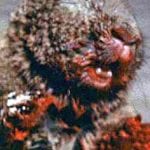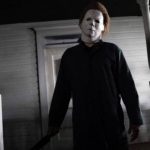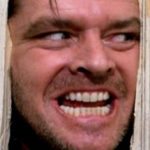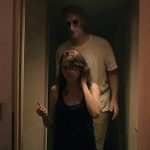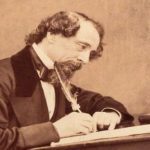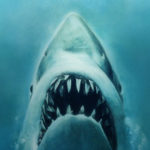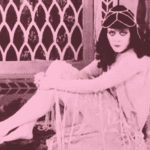 Mysteries
Mysteries  Mysteries
Mysteries  Weird Stuff
Weird Stuff 10 Celebrities Who Have Admitted to Alien Encounters
 Our World
Our World 10 Surprising Secrets of Notre Dame Cathedral
 Miscellaneous
Miscellaneous 10 Intriguing Origins of Popular Carnival Rides
 Weird Stuff
Weird Stuff Ten Unexpected Discoveries Involving Vomit
 Movies and TV
Movies and TV 10 Actors Who Almost Didn’t Take Career-Defining Roles
 Technology
Technology 10 Little-Known Shifts in Computer Science
 Religion
Religion 10 Catholic Histories That Reveal Acceptance of Abortion and Contraception
 Politics
Politics 10 Lesser-Known “First and Only” Facts about U.S. Presidents
 Miscellaneous
Miscellaneous 10 Things You May Not Know about the Fourth of July
 Mysteries
Mysteries 10 Scientific Mysteries We Don’t Fully Understand
 Weird Stuff
Weird Stuff 10 Celebrities Who Have Admitted to Alien Encounters
 Our World
Our World 10 Surprising Secrets of Notre Dame Cathedral
Who's Behind Listverse?

Jamie Frater
Head Editor
Jamie founded Listverse due to an insatiable desire to share fascinating, obscure, and bizarre facts. He has been a guest speaker on numerous national radio and television stations and is a five time published author.
More About Us Miscellaneous
Miscellaneous 10 Intriguing Origins of Popular Carnival Rides
 Weird Stuff
Weird Stuff Ten Unexpected Discoveries Involving Vomit
 Movies and TV
Movies and TV 10 Actors Who Almost Didn’t Take Career-Defining Roles
 Technology
Technology 10 Little-Known Shifts in Computer Science
 Religion
Religion 10 Catholic Histories That Reveal Acceptance of Abortion and Contraception
 Politics
Politics 10 Lesser-Known “First and Only” Facts about U.S. Presidents
 Miscellaneous
Miscellaneous 10 Things You May Not Know about the Fourth of July
10 Horror Films That Were a Nightmare to Make
Horror movies are usually packed with bloody gore and terrified screaming. While much of this is fake, some movies were genuinely a nightmare to make. From endless retakes to dreadful weather, sometimes the cast and crew go through hell themselves while filming. Here are 10 grim behind-the-scenes stories about iconic horror films.
Related: Top 10 Incredible Opening Scenes in Horror Movies
10 The Blair Witch Project (1999)
The Blair Witch Project was shot over eight uncomfortable days in the woods. Co-writers and directors Daniel Myrick and Eduardo Sánchez wanted the found footage film to be as realistic as possible, so the three actors improvised their dialogue. The cast would be left notes such as, “Heather, you’re absolutely sure that to get out of this mess, you go south. Don’t take no for an answer.” And “Josh, somewhere along the way today, you’ve had it with this bulls**t.”
They would also try to frighten the actors at night by shaking their tents and playing recordings of children’s voices. But in a 2018 interview with the Guardian, actor Joshua Leonard described this as “more annoying than anything else.” In his words, filming was a nightmare because “tensions got high, we got hungry, we got uncomfortable, and we hurt each other’s feelings.” They used “taco” as their safe word to break character but soon regretted it because it “kept reminding us how hungry we were.”[1]
9 Midsommar (2019)
Florence Pugh and Jack Reynor have nothing but praise for Midsommar’s director, Ari Aster, but the film’s subject matter led to an unavoidably difficult shoot. “Each day, the content would be getting more weird and harder to do,” Pugh explained on an episode of the Off Menu podcast. “I was putting things in my head that were getting worse and more bleak. I think by the end, I probably, most definitely abused my own self in order to get that performance.”
Reynor also commented on the film’s psychological toll. “It’s dark, and it’s unsettling to watch all these people around you basically making it look like they’re going to kill you in a horrific way,” he told Collider. “There’s nothing you can do, and you’re paralyzed. You know? It was heavy.” His response to people who think that acting isn’t real is, “It’s f–king real when you’re there.” He also commented on the “discomfort of the heat and insects all over the place and people being really pissed off.”[2]
8 The Lighthouse (2019)
Filming for The Lighthouse took place at a purpose-built lighthouse in chilly Nova Scotia and proved to be trying. Director Robert Eggers told Rolling Stone, “There were days when I wanted to die, and I love the cold.” He said that the crew from Nova Scotia, who were used to working in the challenging environment, admitted, “This is the hardest shoot we’ve done by far.”
Actor Robert Pattinson told Interview Magazine that while he loves Eggers, filming the scene where he is sprayed by water while walking along the beach was “the closest I’ve come to punching a director” because “it was like some kind of torture.” After the fifth take, Pattinson said, “What the f**k is going on? I feel like you’re just spraying a fire hose in my face.” To which Eggers replied, “I am spraying a fire hose in your face.”[3]
7 The Evil Dead (1981)
In 2009, writer and director Sam Raimi told Empire, “As far as a physical endeavour goes, [The Evil Dead] was the hardest thing I’ve ever done. We were freezing every night. We didn’t have warm coats. We had an industrial heater that would blowout these noxious fumes.” They also didn’t have any running hot water, but they did have a coffee maker, so Raimi would use that to wash the fake blood off of his hands so that he could touch the camera.
There was also a lot of physical pain involved. Special effects makeup artist Tom Sullivan apologetically said that for the Deadite makeup, he used “acrylic paint, which it even says on the tube don’t put it on your skin, but I used that to paint the masks as well as the actor’s faces.” The paint then had to be scratched off with a scouring pad.
Ellen Sandweiss (Ash’s sister, Cheryl) cut her feet and legs up while running barefoot through the woods, while Betsy Baker (Ash’s girlfriend, Linda) was hit in the face with a wooden beam. She was told that the beams would be Styrofoam, but they ended up being strong enough to, in her words, “put up in your den or your rumpus room.”[4]
6 Frankenstein (1931)
Although Boris Karloff gave an iconic performance as the Monster in James Whale’s Frankenstein, it was also an ordeal. Karloff was forced to work long hours, once having to endure a shoot that lasted 25 hours, which he described as “a long pull.” In the eyes of the studio, Karloff hadn’t worked that many hours in a row because the application and removal of his makeup—which took four hours to put on and an hour and a half to get off—wasn’t counted as work for him.
Karloff also had to repeatedly carry Colin Clive (Henry Frankenstein), rather than a dummy, up the hill to the windmill and then up the stairs while wearing his 48-pound (21.8-kilogram) costume, which caused him back problems. This ill-treatment encouraged Karloff to fight for actors’ rights, and he became one of the founding members of the Screen Actors Guild, established in 1933.[5]
5 The Birds (1963)
In her 2016 memoir, Tippi Hedren alleged that director Alfred Hitchcock mistreated her, particularly while filming The Birds, because she rejected his romantic advances. For instance, the scene where her character is attacked by birds in a bedroom was supposed to be shot with mechanical birds. However, right before they began, Hedren was told they weren’t working and live birds would be used.
Hedren had shrieking birds thrown at her for five days, and on the last day, they were even tied to her dress. “By then, I was barely coherent, not sure how much more of this I could possibly take,” she wrote. “I was told later that it was even more horrifying and heartbreaking for the crew to watch than the previous four days had been, and there wasn’t a thing anyone but Hitchcock could do to put a stop to it.” When one of the birds nearly pecked her eye out, Hedren snapped and said she was done. She ended up in bed for days with exhaustion and, according to her memoir, Hitchcock continued to make her life a misery by ruining her acting career and sexually assaulting her.[6]
4 The Shining (1980)
Filming for Stanley Kubrick’s The Shining took 56 grueling weeks, with Shelley Duvall, who played Wendy Torrance, suffering the most. In a behind-the-scenes documentary filmed by Kubrick’s daughter, Vivian, Duvall explains that she was “in and out of ill health because the stress of the role was so great.” She can be seen lying on the ground in pain and losing chunks of hair. When she showed the hair to Kubrick, he said, “I don’t sympathize with Shelley.”
Kubrick was known to be a finicky director, shooting at least 35 takes before moving on, and this, paired with the intensity of playing a distressed character, wore Duvall down both physically and mentally. In a 2021 interview with the Hollywood Reporter, she said that doing so many takes of “running and crying and carrying a little boy… gets hard.”
Kubrick shot the staircase scene where Wendy swings a baseball bat at Jack (played by Jack Nicholson) a staggering 127 times. As for the emotional toll, she said that “after a while, your body rebels. It says: ‘Stop doing this to me. I don’t want to cry every day.’ And sometimes, just that thought alone would make me cry.”[7]
3 The Exorcist (1973)
The outbreak of a fire and the deaths of nine people led to rumors about the production of The Exorcist being cursed. Director William Friedkin claimed, “After all I’ve seen on this film, I definitely believe in demonic possession… We were plagued by strange and sinister things from the beginning. It is simply the hardest thing I have ever done in my life.”
Although talk of a curse was likely a marketing ploy, the film’s production was unpleasant, and much of that was due to Friedkin himself. Director of photography Owen Roizman described Friedkin as “the biggest schizophrenic I know. Completely warm one minute, and just venomous the next.” The director would repeatedly fire and rehire crew members. He would also slap actors and randomly fire a gun to startle them. Linda Blair (who played the possessed Regan) and Ellen Burstyn (her mother) were both left with long-term back problems due to being thrown around while filming.[8]
2 The Texas Chain Saw Massacre (1974)
The dinner scene in Tobe Hooper’s The Texas Chain Saw Massacre was filmed over the course of 26 exhausting hours in boiling temperatures. In The Texas Chain Saw Massacre: The Film That Terrified a Rattled Nation (2019), author Joseph Lanza describes how the dirty set was littered with rotten food, which, combined with the extreme heat, meant that people on set “had to run outside for oxygen and periodic vomit breaks.”
Although shooting this scene was a misery for all involved, it was particularly bad for Marilyn Burns, who played Sally. When the prop knife that contained fake blood failed to work for the shot where her finger is sucked, “Hansen [who played Leatherface] grew so impatient that he surreptitiously sliced her finger for real.” For the scene where Jim Siedow’s cannibalistic character beats Sally, he was encouraged—including by Burns herself—to actually make contact. He says that he “started really slugging her,” and after eight takes, “she just fainted dead away. The poor girl was beaten up pretty badly.”
All this took a toll on Burns, who recalls, “When I was crazy at the end of the movie, laughing hysterically, that wasn’t acting.”[9]
1 The Last House on the Left (1972)
When filming The Last House on the Left, Sandra Peabody, who played Mari, feared that the scenes of rape and torture might actually cross over into reality. David A. Hess says that during his rape scene with her, “I scared the living shit out of her, man, she really thought I might… I started to pull her pants down and grab her.” He even asked director Wes Craven, “Can I?”—suggesting he would actually rape her—after which “she freaked.”
Craven says that Peabody “often wasn’t acting.” He explains that Hess would stay in character while not shooting, meaning “Sandra really was afraid of him, and probably of Fred [Lincoln] a bit too.” Marc Sheffler also threatened Peabody when she was struggling with a scene they had together. “I grabbed her, and I put her head over the cliff,” he recalls. “I said, ‘If you don’t get it right the next time, I’m gonna throw you over here, and Wes will shoot it, and it’ll be great footage, and you’ll get hurt.’” Fearing for her life, she managed to perform as desired in the next take.[10]


